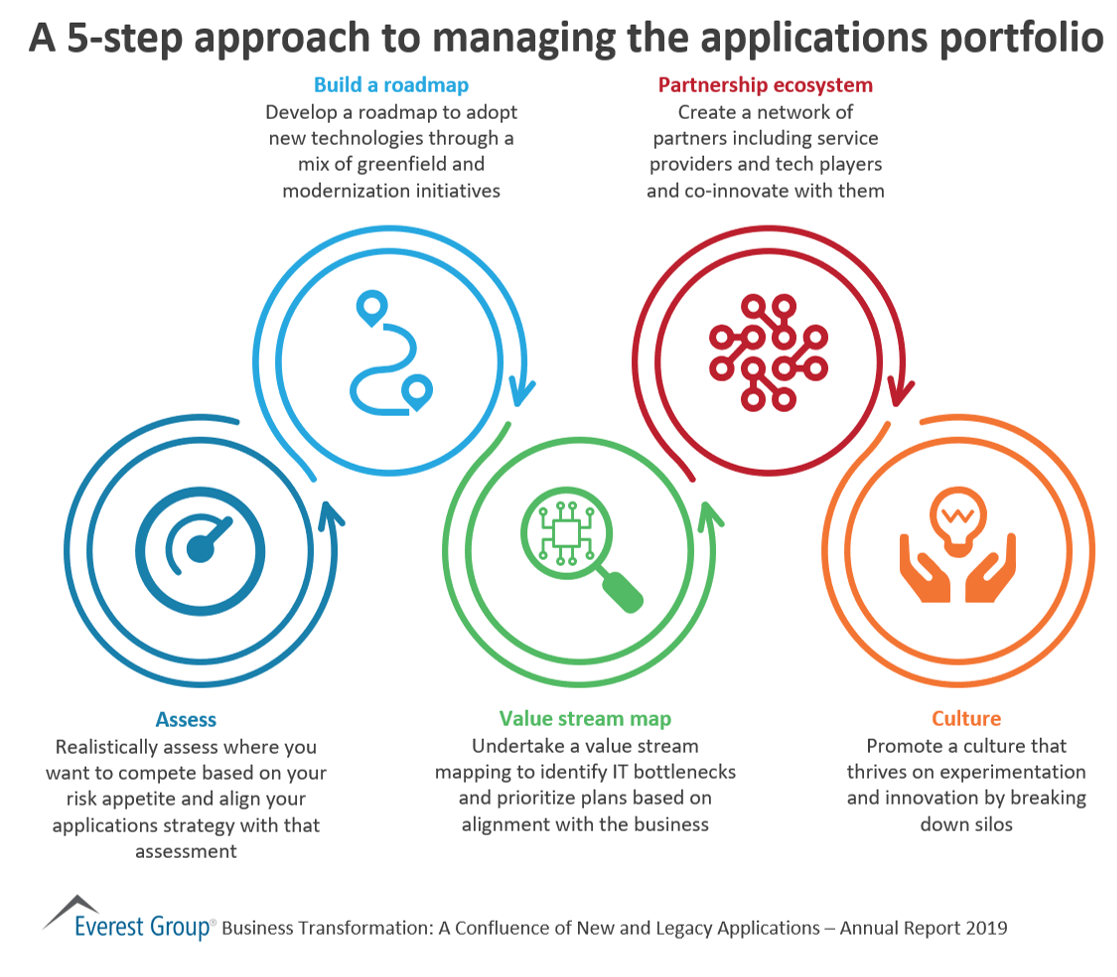How Enterprises Can Achieve Full Value from ServiceNow Investments | Blog
In response to changing market demands, ServiceNow has expanded its platform over the past two years, from primarily managing IT workflows to providing full enterprise solutions. Read on to learn the best practices from industry leaders to ensure your greatest return from ServiceNow investments.
Since our inaugural ServiceNow Services PEAK Matrix Assessment in 2020, the software company has significantly expanded its portfolio to go beyond IT Service Management (ITSM) to new offerings that help clients drive business growth, increase resilience, and enhance employee productivity.
Our recently published second edition of the assessment found about 65% of enterprises are exploring scaling up ServiceNow investments for end-to-end process modernization. CIOs who have upgraded their IT workflow on ServiceNow are now looking to transform business processes and integrate the platform with existing systems of record, engagement, and intelligence.
Based on our interactions with industry leaders, we recommend enterprises consider the following factors when seeking to modernize their business processes with ServiceNow:
- Shift away from IT to business Key Performance Indicators (KPIs)
The watermelon effect of KPIs in ITSM is not new. Over the past two years, we have addressed several situations where ServiceNow clients struggled with having all the metrics look green on the outside but are red on the inside.
The reason often is two-fold – tracking irrelevant metrics and overreliance on IT metrics. Enterprises need to track relevant metrics closely tied to business outcomes while being aware of the pitfalls in measuring these metrics.
ServiceNow customers are tracking business KPIs such as customer experience, reduction in touchpoints, percentage of issues resolved by self-healing, and cost efficiency. Leading service partners are proactively collaborating with customers to course correct and update KPIs and tracking methods during quarterly and mid-year reviews.
- Minimize customization
Early adopters leveraged ServiceNow to make custom applications and create a final product that mimicked organizational processes. These solutions were developed on the go to meet demand. As ServiceNow continues to push new and improved versions, it has become very difficult and costly for these customers to make updates due to the huge technical debt.
Clients that adopted ServiceNow largely out-of-box are more agile and tend to benefit from improved processes. Enterprises should modernize their processes to fit the standard offerings and minimize customization or wait for the offerings to sufficiently mature before investing.
- Select the right transformation partner
We think Albert Einstein’s famous statement, “The definition of insanity is doing the same thing over and over and expecting different results,” unfortunately, applies here. Most enterprises need qualified staff to help guide and manage the project over multiple years. They also need to deal with unplanned turnover, the ServiceNow talent gap, inflexible contracts that don’t allow for strategy changes, ever-shrinking budgets, and, last but not least, the desire to have measurable outcomes. But often, enterprises end up using the same vendor selection and RFP processes without taking these factors into account.
Leading enterprises have not only updated their vendor selection methods but also have started planning for attrition, contractual flexibility, and outcome accountability right at the beginning of the engagement.
Large enterprises now are more open to engaging with specialist ServiceNow partners for module-specific requirements, especially for non-ITSM products such as Human Resources Service Delivery (HRSD), Customer Service Management (CSM), and Governance, Risk, and Compliance (GRC). This is mainly owing to the specialized focus and right mix of flexibility and agility that large Global System Integrators (GSIs) often fail to offer.
We are closely tracking demand and supply-side developments in ServiceNow. For more insights, see our report, ServiceNow Services PEAK Matrix Assessment 2022, which sheds light on the ServiceNow partner ecosystem.
We would like to hear your thoughts on your ServiceNow investments and the growing adoption of innovative operating models to achieve business outcomes. Please reach out to us at [email protected] and [email protected].
You ca also find out What’s Ahead After a Decade of Digital Transformation in this webinar as we share perspectives on what’s in store for the digital transformation industry.

